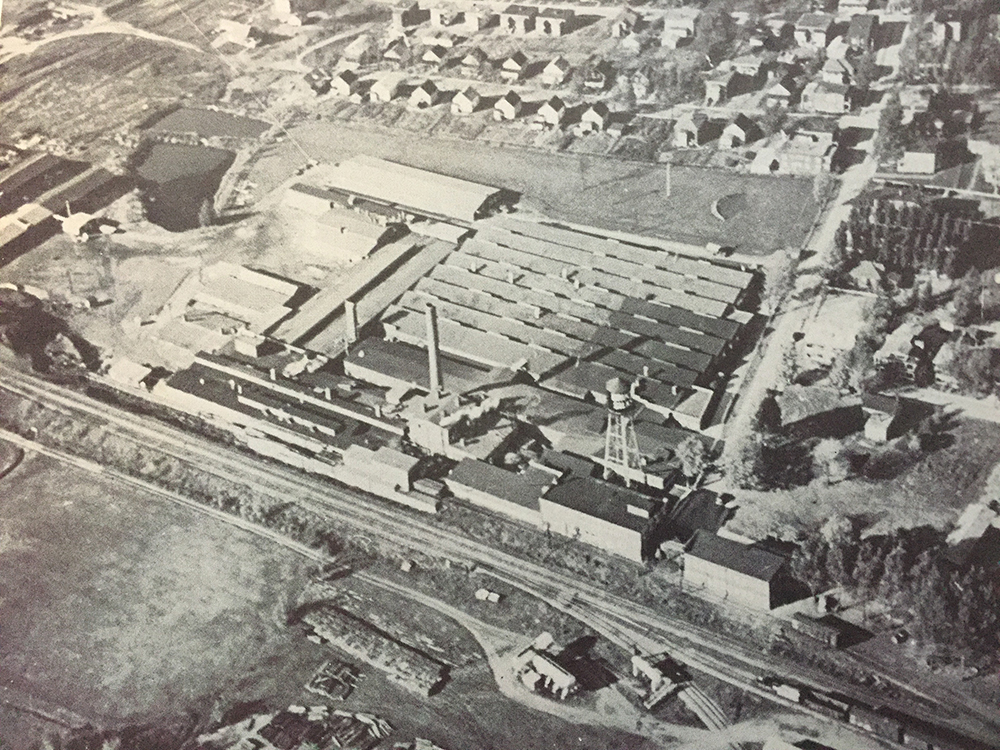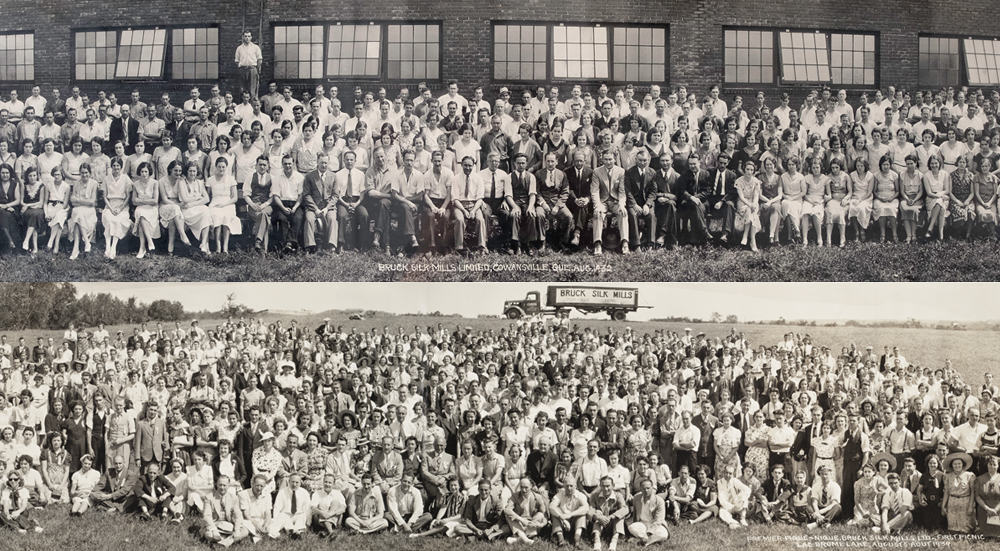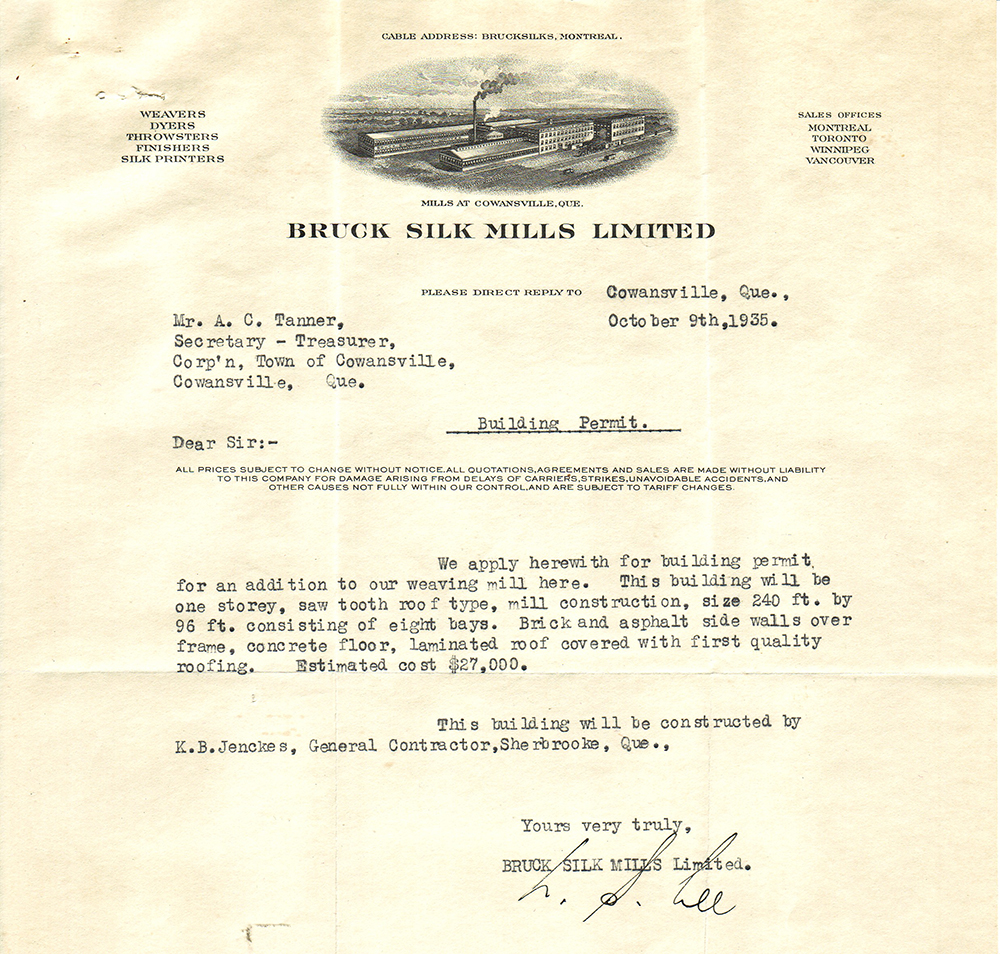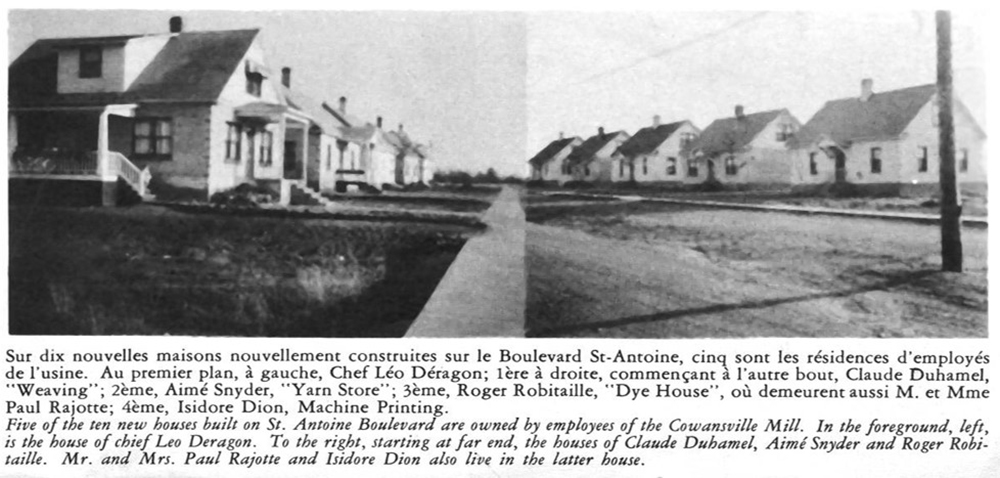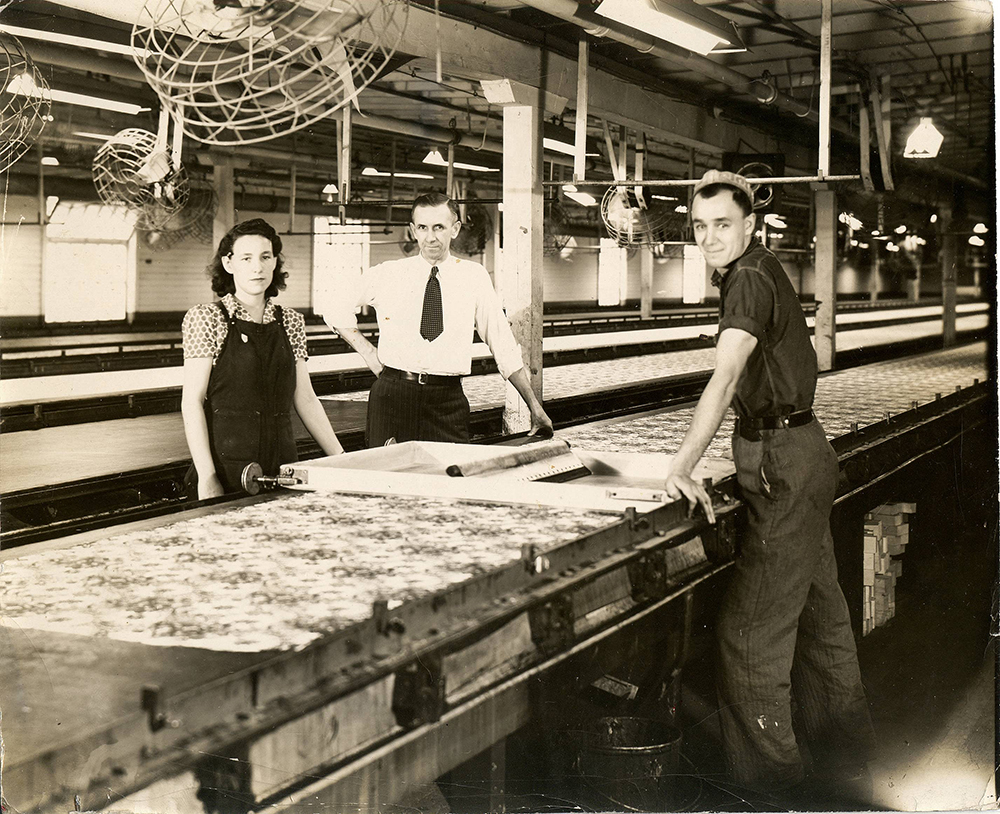From economic to demographic boom
“Between 1920 and 1955, Cowansville’s economic, social, sporting, and cultural life depended largely on the Bruck Mills. So much so that in 1945, the Bruck factory employed more than 1,200 people while the population of Cowansville was barely 3,600.”
– Michel Racicot, president of the Société d’histoire de Cowansville
Expansion
The growth of the company and the evolution of the production drive the Bruck’s managers to increase and transform the Cowansville facilities. Successive expansions quadruple the factory’s surface area in less than 15 years. The company, which has been operating 24 hours a day since 1933, becomes the town’s main employer. From the initial 30 employees, it grows to 300 in 1926, 600 in 1936, and 1,200 in 1945, which—according to the Sherbrooke Daily Record—represents one third of the town’s population at the time.
New workers arrive from many regions of Quebec, including the Beauce and the lower St-Lawrence. Others come from Eastern Europe, particularly Poland, which will earn a neighbourhood in Cowansville the nickname “Little Poland”.
Housing workers
To meet the housing needs of the influx of workers, the Bruck partakes in investments with Cowansville Realties Limited, a real estate company co-founded by several of the city’s entrepreneurs in 1923. Bruck Mills immediately buys land that enables the rapid growth of subdivisions and new streets. About 20 houses are built near the factory on the new Westmount, Willard, and Saint-Antoine roads. Employees have access to new houses that can be rented at low cost or bought with the help of their employer. Some of these houses still exist today.


